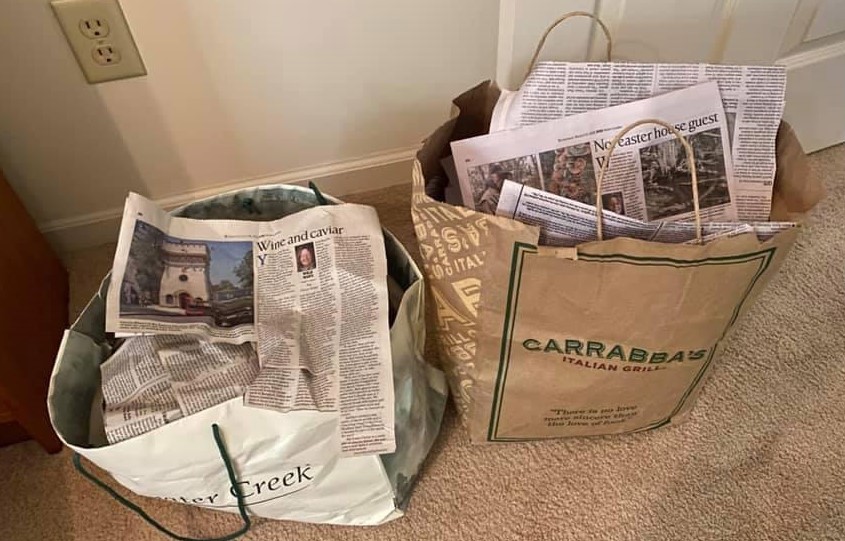By Pat Foster-Turley Ph.D.
November 11, 2021

Recently I’ve been browsing and rereading some of my past columns, published from 2005 to mid-2021 in the News-Leader. This isn’t easy to do on the Fernandina Beach News-Leader website in their search mode, and once you do, the content is only available with a subscription or past a paywall. But now, thanks to the diligent effort of Amelia Island Museum of History archivist Ronda Outler, they are all now available to everyone for free at the museum search website (https://ameliaisland.pastperfectonline.com/). I can’t imagine how long it took Ronda and her team to scan my two large bags full of sixteen or more years of weekly column clippings but they have done this! To find these, enter the search term “Turley” and they are all there for anyone’s reference, organized in chronological order. My columns these days continue in the Fernandina Observer, online, and are available for free to one and all.
It’s a bit too depressing for me to go through my past columns right now. When we bought our home off Simmons Road twenty years ago we were one of the first ones in the community, facing a large retention pond with a woods behind it belonging to the City of Fernandina Beach and zoned for recreation. The retention pond was alive then, full of frogs and dragonflies, attracting all kinds of other wildlife into the area. We happily spent evenings watching bats fly above the pond seeking insects, mornings looking for painted buntings at our bird feeders, and afternoons being fascinated by the “snake races” of harmless black water snakes that we often saw swimming across the pond. We kept a notebook on our observations, and most weeks we had new species and wildlife behavior to report. All of these sightings have worked their way into my earlier columns and this largess of wildlife continued for the first ten years or so of our tenure here.

When we first moved here I spent my early days following the manual from the St. Johns River Water Management District’s guidelines in their brochure “Good pond, bad pond” and I did everything in my power to make it a “good pond.” A good pond was one with lots of native aquatic plants that helped prevent algae buildups, and added habitat for wildlife, food for pollinators, and flowers to enhance the pond edge. For years I roamed the roadside ditches in our area and dug up and transplanted zephyr lilies, duck potatoes, pickerel weed, and irises, and purchased other waterside friendly plants like bald cypress trees, button bushes, and soon enough had a full complement of plants along the pond edge. Dragonfly nymphs flourished in the pond, and Paula Staples the Watershed Action Volunteer coordinator often visited to collect specimens to show students about the importance of dragonflies. I am a professional international biodiversity specialist and I was proud to encourage the native species in my own small part of the world.
But that was then and this is now. Our Simmons Cove development is built out and the retention pond is serving its purpose: to contain the pollutants from runoff from the concrete and home sites and lawns that feed into the pond. As a deed restricted community all homes here are required to have a well-maintained lawn, great. But with these lawns come toxic chemicals used to kill insects and weeds. And, guess what? All of the excess flows into the pond.
Now, there are no broad-leaved plants like pickerel weed and duck potatoes in the pond. The same chemicals that kill dollar weed on lawns kill these plants in ponds. The only plants now surviving in the pond are grass-like—in other words the plants that weed killers do not target. And now there are no frogs in the pond—it’s just too toxic for them. There are still some turtles—hardy beasts—and herons sometimes come to feed on the few fish that remain but there are no longer any snakes. Even the birds at the feeders have declined in diversity until just the old standbys of cardinals and chickadees remain. Nowadays when I am in the back yard I turn my chairs around to face the successful butterfly garden that I planted instead of the pond, which I consider to be a dead zone now.
The erosion of biodiversity in my yard is just too painful to witness anymore and, no, I don’t want to reread all my old articles in the Museum archives to reminisce about what once was. But maybe you do. There’s a lot of good info in these articles, all for free. Have at it!
Pat Foster-Turley, PhD is a zoologist on Amelia Island. She welcomes your nature questions and observations. [email protected]

Pat brings out a good point: well-manicured lawns are too often anathema to healthy ecosystems. There are organic methods to keeping a lawn healthy, but they are often very labor-intensive, too. On another note, I wonder if Pat realizes that scanning in those old articles from the News-Leader might be violating copyright law. There is a reason that one must have a subscription or get past of paywall to access those articles.
Thanks Pat, Cheers